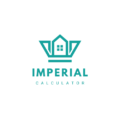Recipe Converter (Imperial to Metric)
© Imperial Calculator Ltd. All rights reserved.
Disclaimer: All Converters in the Imperial Calculator have been reviewed by the relevant Imperial measurement system experts.
Formula for Recipe Converter (Imperial to Metric)
Cups to Milliliters:
Milliliters (ml) = Cups × 240
where:
1 cup = 240 milliliters
Fluid Ounces to Milliliters:
Milliliters (ml) = Fluid Ounces × 29.5735
where:
1 fluid ounce = 29.5735 milliliters
Ounces to Grams:
Grams (g) = Ounces × 28.3495
where:
1 ounce = 28.3495 grams
Pounds to Kilograms:
Kilograms (kg) = Pounds × 0.453592
where:
1 pound = 0.453592 kilograms
Teaspoons to Milliliters:
Milliliters (ml) = Teaspoons × 4.92892
where
1 teaspoon = 4.92892 milliliters
Tablespoons to Milliliters:
Milliliters (ml) = Tablespoons × 14.7868
where
1 tablespoon = 14.7868 milliliters
Table of Contents
Why Convert Recipes?
Many recipes use imperial units like cups, ounces, and pounds, while others use metric units like grams and milliliters. Converting between these systems ensures accurate measurements and successful cooking or baking.
If you follow a recipe with unfamiliar units, the results may be inconsistent. Using a recipe converter helps maintain accuracy, whether adjusting for different measuring systems or scaling portions.
Common Imperial to Metric Conversions
Each ingredient has a unique weight or volume, so conversions vary. Below are standard conversions for common ingredients.

Dry Ingredients Conversion
Dry ingredients like flour, sugar, and spices are typically measured in cups, ounces, or pounds in imperial units. In metric, they are measured in grams or kilograms.
| Imperial Measurement | Metric Equivalent |
| 1 cup flour | 120g |
| 1 cup sugar | 200g |
| 1 oz (ounce) | 28g |
| 1 lb (pound) | 454g |
Tip: Always use a kitchen scale for precise weight measurements.
Liquid Ingredients Conversion
Liquid ingredients, such as milk, water, and oil, use fluid ounces, pints, quarts, or gallons in imperial. In metric, they are measured in milliliters or liters.
| Imperial Measurement | Metric Equivalent |
| 1 fl oz (fluid ounce) | 30ml |
| 1 cup | 240ml |
| 1 pint | 473ml |
| 1 quart | 946ml |
| 1 gallon | 3.785L |
Tip: Use a measuring jug marked with both imperial and metric units for easy conversion.
Butter and Fat Conversion
Butter is often measured in tablespoons, sticks, or ounces. Metric measurements use grams.
| Imperial Measurement | Metric Equivalent |
| 1 tbsp butter | 14g |
| 1 stick butter | 113g |
| 1 oz butter | 28g |
Tip: Butter markings on packaging help with quick conversions.
How to Convert Recipes Manually
To convert a recipe manually, follow these steps:
- Identify all ingredients in imperial units.
- Use a conversion chart or calculator to find the metric equivalent.
- Adjust cooking times if necessary. Oven temperatures in Celsius differ from Fahrenheit.
- Weigh dry ingredients instead of using volume measurements for accuracy.
Oven Temperature Conversion (Fahrenheit to Celsius)
Ovens in the U.S. use Fahrenheit, while many other countries use Celsius.
| Fahrenheit (°F) | Celsius (°C) |
| 250°F | 120°C |
| 300°F | 150°C |
| 350°F | 175°C |
| 400°F | 200°C |
| 450°F | 230°C |
Tip: Reduce cooking time slightly when converting to Celsius since metric ovens often heat more evenly.
Best Tools for Recipe Conversion
- Digital Kitchen Scale: Weighs dry and liquid ingredients accurately.
- Measuring Jugs: Displays metric and imperial units.
- Online Recipe Converter: Automates conversions for quick results.
- Oven Thermometer: Ensures proper temperature settings.
Conclusion
Converting recipes from imperial to metric ensures accuracy and consistency in cooking. Use a conversion chart, calculator, or measuring tools to get precise results. Whether baking or cooking, proper measurements improve taste and texture.
